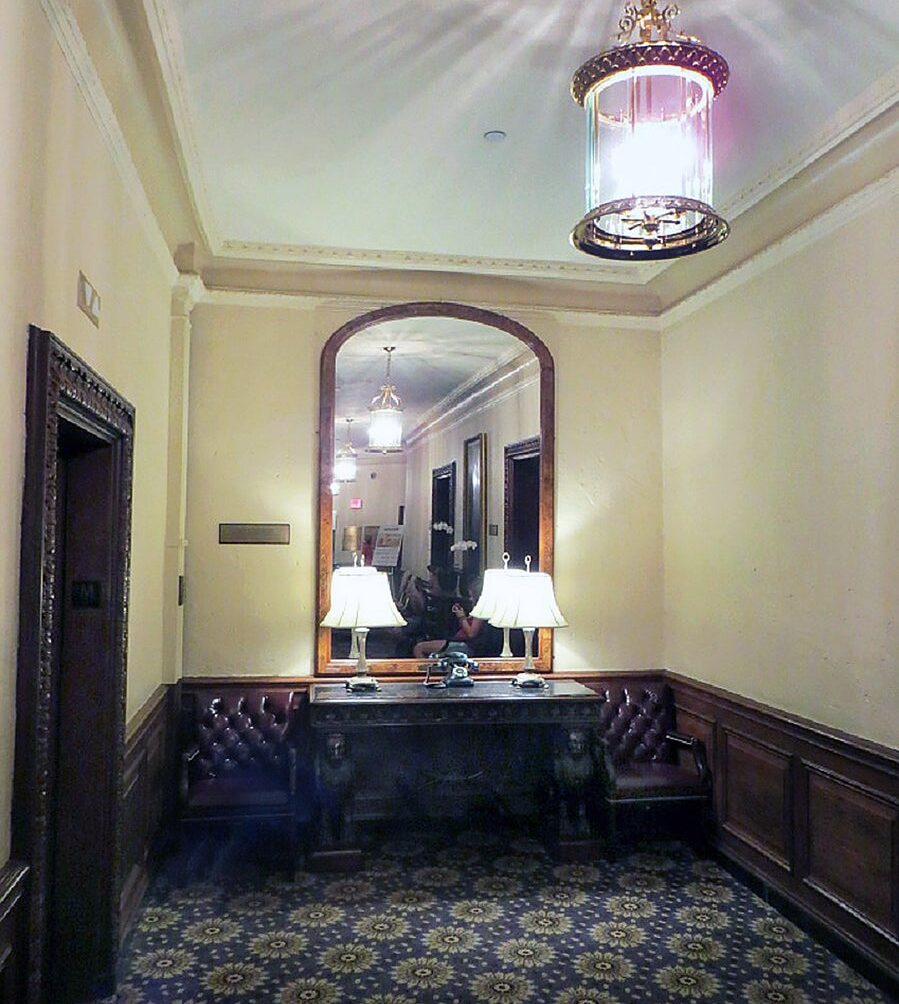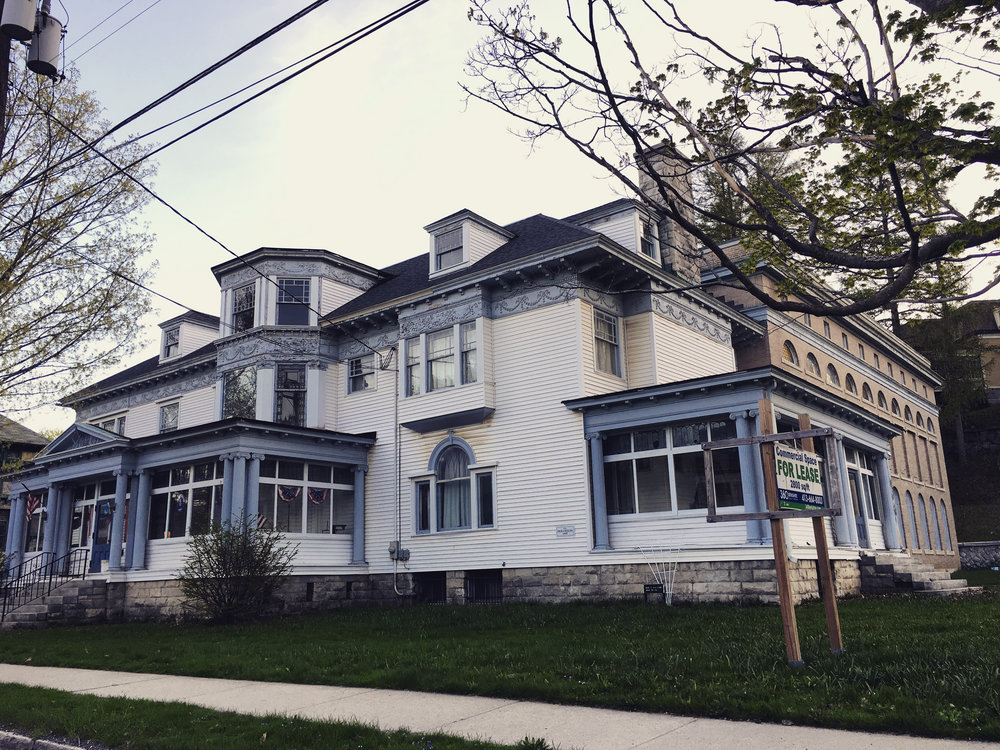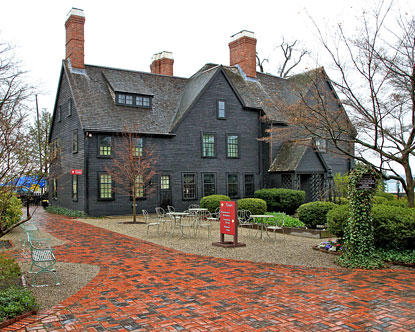Hoosac Tunnel is believed to be haunted by workers who have perished during the construction of the tunnel. The most widely known haunting of Hoosac Tunnel is the ghostly sighting of the 13 men who perished in the tunnel during an explosion in October of 1867. Days after the incident, villagers living nearby would report seeing ghosts of miners walking through the mountains. The apparitions would appear and disappear in flashes, leaving no sound or footprints.
During the early months of 1868, workers in the tunnel reported the constant voice of a man screaming in agony. Unconvinced of the workers’ claims, mechanical engineer Paul Travers entered the tunnel with Mr Dunn, a site manager from the construction company. A couple hundred feet into the tunnel, the duo were startled to hear a man groaning in pain. Yet, Travers, Dunn and a 10 men search party could not locate the man or the source of the voice. At that point, the two were convinced that it might have been something not of this realm.
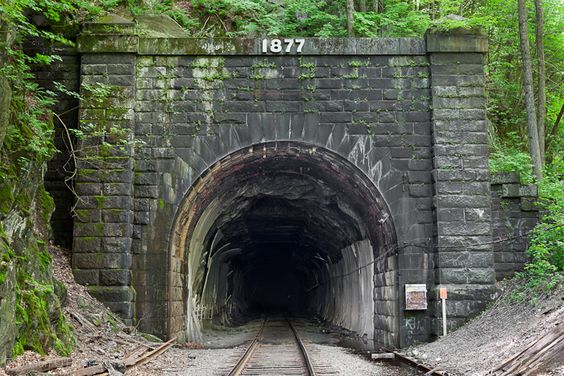
Joseph lmpoco, a former employee of Boston and Maine Railroad, have had numerous encounters with the paranormal while working in Hoosac Tunnel. During an interview in The Berkshire Sampler published on October 30, 1977, Impoco recounted an inexplicable event that happened while he was working alone on the (active) railroad tracks just outside the tunnel. All of a sudden, Impoco heard a faint voice saying, “Run, Joe. Run!”
As soon as Impoco turned his head, a train can be seen exiting the West Portal. Impoco immediately leaps off to the side of the track, barely escaping the speeding train. Till this day, Impoco had no idea how he had overlooked the bellowing sound of the train, and who had alerted him to the locomotive exiting the tunnel.
History of Hoosac Tunnel
Hoosac Tunnel was first proposed in 1819 as part of plans to connect Boston to Upstate New York via the Deerfield River and Hoosic River on the eastern and western end of Hoosac Range. The proposal was initially laid aside due to the massive funding required and the difficultly of boring through the Appalachian Mountain chain. It was later revived as part of the Troy and Greenfield Railroad.
In 1841, Alvan Crocker, a paper mill owner from Fitchburg, Massachusetts, formed the Fitchburg Railroad that travelled between Boston and Fitchburg. Seven years later, Crocker secured a charter for the Troy and Greenfield Railroad with provisions for a tunnel through Hoosac’s Green Mountains.
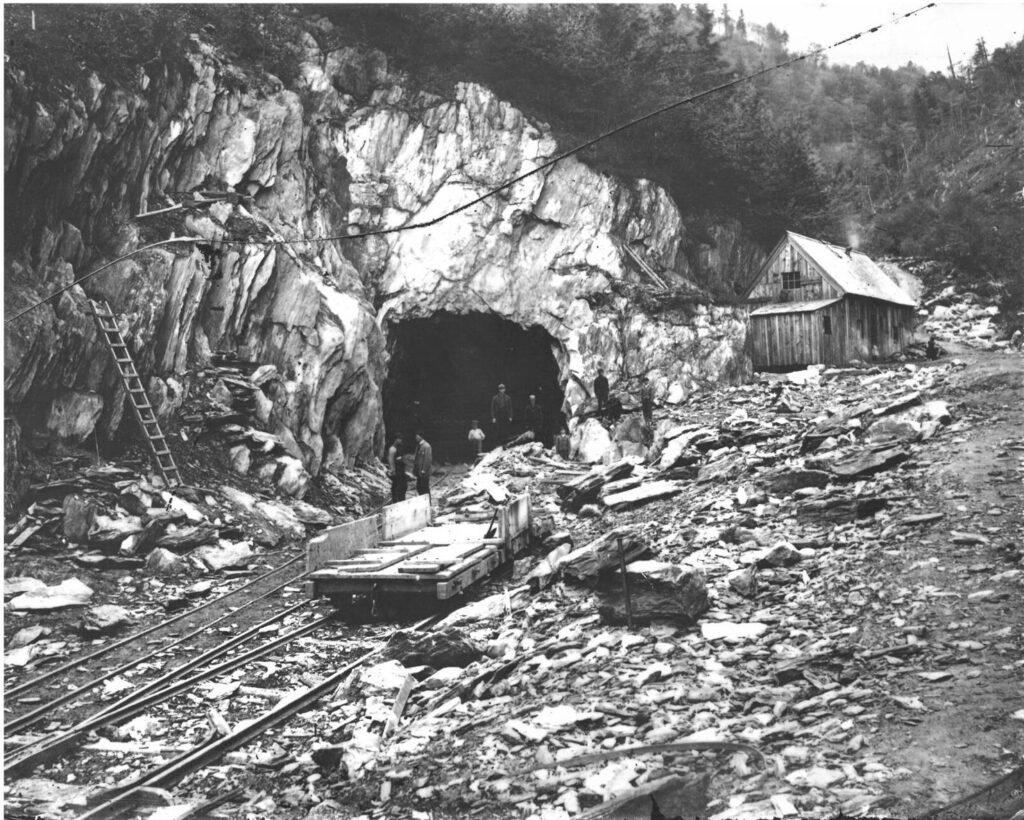
Construction of Hoosac Tunnel began in 1851 and was led by chief engineer A.F. Edwards. In 1856, Herman Haupt replaced Ewards as the project’s chief engineer. The project met a temporary setback when Chester W. Chapin, president of the Western Railroad, opposed the construction of Hoosac Tunnel as it would come into direct competition with his company. Chapin’s successfully lobbied to block state funding of the Hoosac Tunnel, causing Haupt to bankrupt and the project to come to a halt.
In 1862, Troy and Greenfield Railroad defaulted on a loan from the Commonwealth of Massachusetts, causing the state to take control of its railroad network and the Hoosac Tunnel project. Alvan Crocker, now superintendent of railroad, restarted the tunneling project once again in 1863.
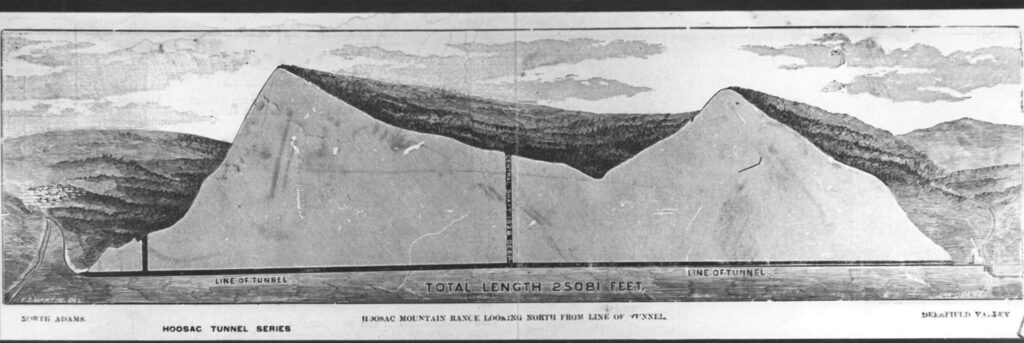
Over the next decade, several engineers including Thomas Doane, Walter Shanly, Benjamin Henry Latrobe II, and Bernard N. Farren were hired to oversee the construction of Hoosac Tunnel. An array of methods from hand digging to the Burleigh Drilling Machine were employed to bore through the tunnel. Notably, the $25,000 “Wilson’s Patented Stone-Cutting Machine” was hired on March 1853 in attempt to speed up digging. However, the massive equipment malfunctioned after just 12 feet of progress.
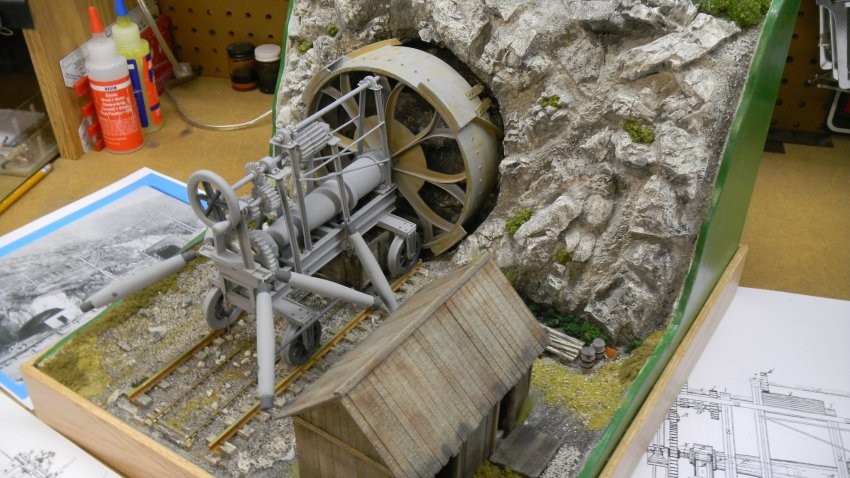
The project was also the first in the United States to utilize nitroglycerin and electric blasting caps on a commercial case. However, the dangerous and rudimentary methods used have also led to numerous deaths. On October 17, 1867, an explosion caused by the ignition of a lantern’s gas fume caused supplies to fall 600 feet down a ventilation shaft to the tunnel, killing all 13 men who were below. It was later discovered that a crude raft was built in the flooded tunnel, and that the men had survived the explosion but died from asphyxiation. The tragedy prompted workers to nickname the shaft “The Bloody Pit” and the tunneling project was paused for a year. Over the course of the project’s 24 years of history, a total of 196 workers were killed, mostly by explosions.
On Thanksgiving Day, November 26, 1874, Farren successfully bore through the last metre of the 4.75-mile tunnel, concluding the monumental project that had taken over two decades to complete. The first train passed through the Hoosac Tunnel on February 9, 1875. For a period, the Hoosac Tunnel was the longest railway tunnel in North America.
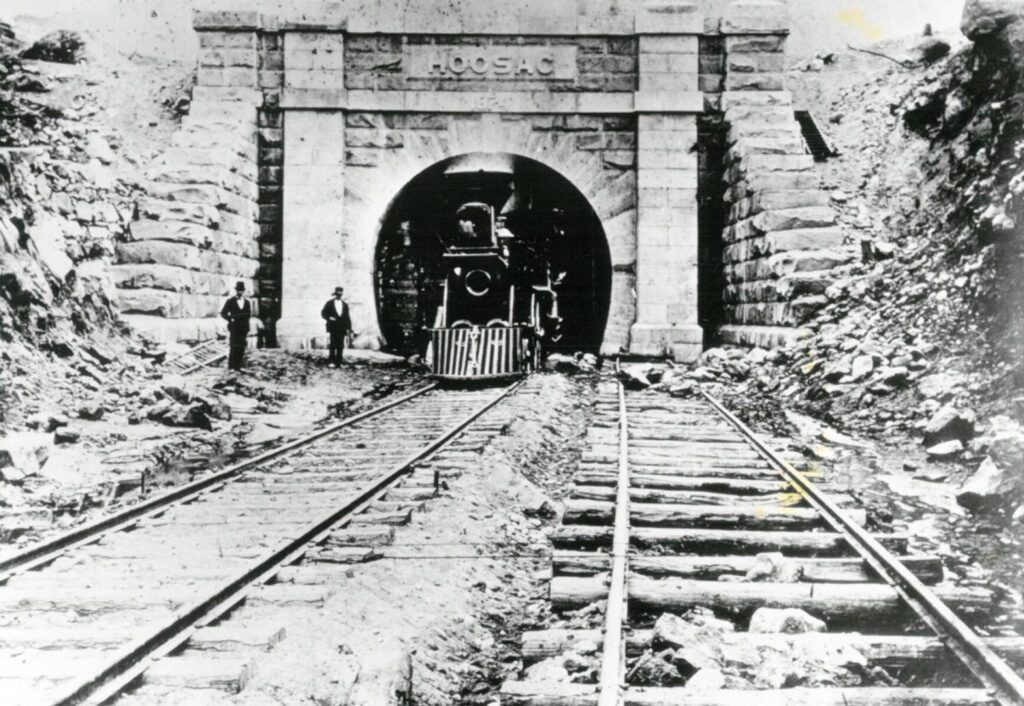
A rivalry between Troy and Boston Railroad, Boston, Hoosac Tunnel and Western Railway (BHT&W), and Troy and Greenfield Railroad, ensued with the completion of the tunnel. In 1887, Fitchburg Railroad purchased all three companies, ending the competition that had lasted over a decade. In 2009, Hoosac Tunnel was handed over to Pan Am Southern, a joint venture of Pan Am Railways and Norfolk Southern Railway.
Today, Hoosac Tunnel remains an active railroad tunnel, although it is mostly used to transport freight. On February 2020, a series of collapses occurred on the end at West Portal, causing the tunnel to close down. After two months of repair and maintenance, Hoosac Tunnel reopened its railroad tunnel on April 4, 2020.
Hoosac Tunnel Train Ride
Locomotive enthusiasts interested in catching a train ride into Hoosac Tunnel may have considered the Hoosac Valley Train Ride offered by Berkshire Scenic Railway Museum. The train ride is a one hour round trip between Adams and North Adams city and does not go through Hoosac Tunnel. Visitors looking to visit Hoosac Tunnel will have to travel by foot to the East Portal or West Portal of the historic tunnel.
Visitors looking to travel through Hoosac Tunnel should take a ride on Amtrak’s annual Autumn Colors Express, a round trip train journey from Huntington to Hinton. The day-long journey takes passengers through sections of southern New England railroad routes that are rarely used by passenger trains. This includes the 4.75-mile Hoosac Tunnel that takes one from North Adams to Florida.
How To Get to Hoosac Tunnel?
Both the East Portal and West Portal are open for visitation by tourists. However, it is encouraged to visit the East Portal as it is located right next to a road. To visit the East Portal, drive approximately half a mile northwest from the intersection of River Road, Tunnel Road, and Whitcomb Hill Road. The entrance can be found to the left of the track crossing. The exact Google Map coordinates can be found here.
The West Portal is located in the city of North Adams, off the intersection of Church Street and West Shaft Road. Note that there will be a short hike through the bushes in order to reach the entrance. The exact Google Map coordinates can be found here.
Can You Enter Hoosac Tunnel?
It is illegal to enter Hoosac Tunnel as the site is an active railroad. Freight trains travel through the tunnel 24/7 on an unpublished schedule, making it highly dangerous to enter the tunnel. “No Trespassing” signs can be found throughout the area, warning visitors not to enter the tunnel or walk on the railroad track without any permissions. Trespassers caught entering Hoosac Tunnel will be arrested and handed over to the local authorities.
Visitors are still able to visit the east and west entrance of Hoosac Tunnel as long as they do not enter the tunnel, walk on the railway track, or obstruct the operation of the railw

